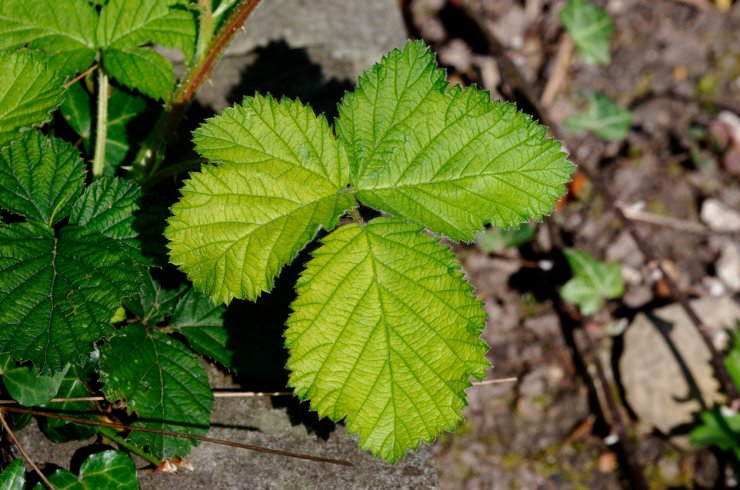
Young blackberry bush in soil.
If you’re not growing blackberries in containers, you have to choose a spot for your raised bed or open land blackberry garden. It’s recommended that you choose your site a year before planting, so you can amend the soil as needed.
Blackberries do not grow well in heavy clay soils, which make it hard for the roots to spread out. Clay soil also does not drain sufficiently—blackberries will not grow in areas that collect standing water when it rains. Amend with organic matter if you have this type of soil in your open ground garden.
Blackberries are remarkably tolerant—hence their tendency to grow prolifically in the wild—but they do best in nutrient-rich, loamy, well-drained soil with a pH of 6.0 to 7.0. Wet or alkaline soil will definitely hinder growth.
Remember that a blackberry plant will last up to 30 years, so it’s worth it to make sure your soil is suitable for it. If necessary, take a sample to your local county extension service for testing, or test with a pH soil test kit available at home and garden centers.
Remember also that blackberries are prolific growers, so make sure you have plenty of room for your plants! If growing in open ground, you’ll want to have room to mow around the plants to contain suckers without having to manually cut them back.
You must choose a site that gets full sun and is protected from high winds. Don’t try to grow blackberries near existing fruits or vegetables, or where you’ve previously grown tomatoes, eggplant, peppers, strawberries, or any other type of berry bush. If you’re also growing raspberries, leave at least 300 feet between the two berry patches. Avoid planting near wild blackberries, which may carry diseases that can drift to your garden.
If growing in open ground, make sure compost and manure or other fertilizers are well worked in. Rake the ground, breaking up dirt clods and removing rocks, weeds, and debris. Amend as necessary with organic matter such as wet peat moss, well-aged sawdust, or leaf litter.
If you’re planting multiple blackberry plants, plant them in rows running north to south to enhance sunshine availability, and the rows should be between 3 feet and 8 feet apart.
If you’re planting in pots, be sure to use potting soil of a topsoil blend. Check the variety of plant you’ve bought to see whether it needs a trellis, and install one if necessary, or allow the plant to attach to a fence (making sure the fence is in a site with full sun, since you won’t be able to move the pot).
Have you successfully chosen the ideal site for a blackberry patch? Please share with us your criteria and characteristics of your site.


 Previous
Previous

